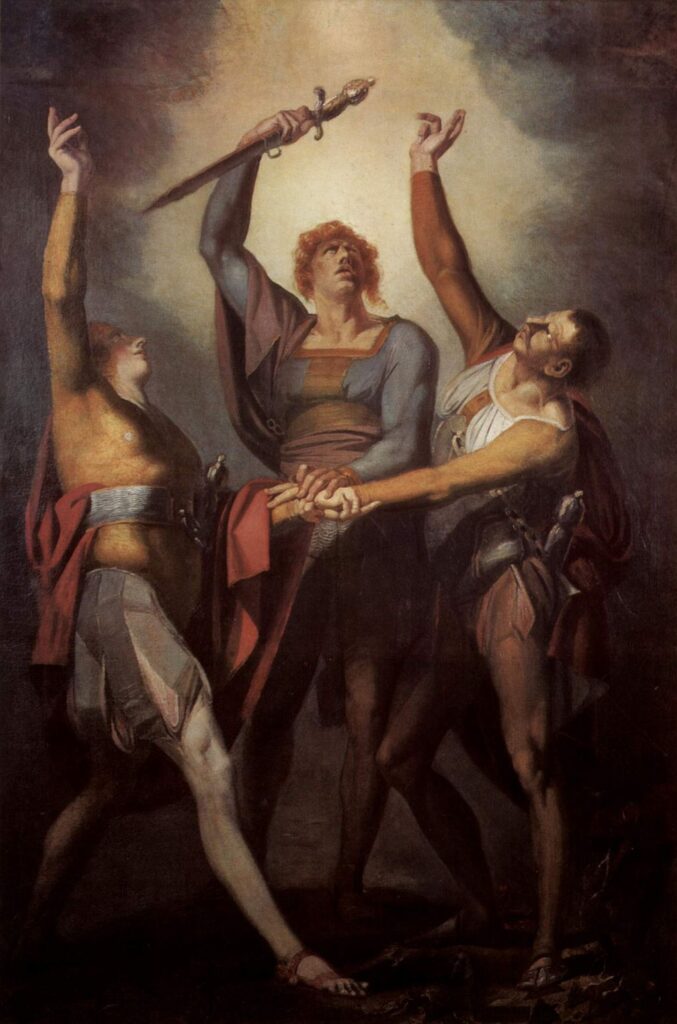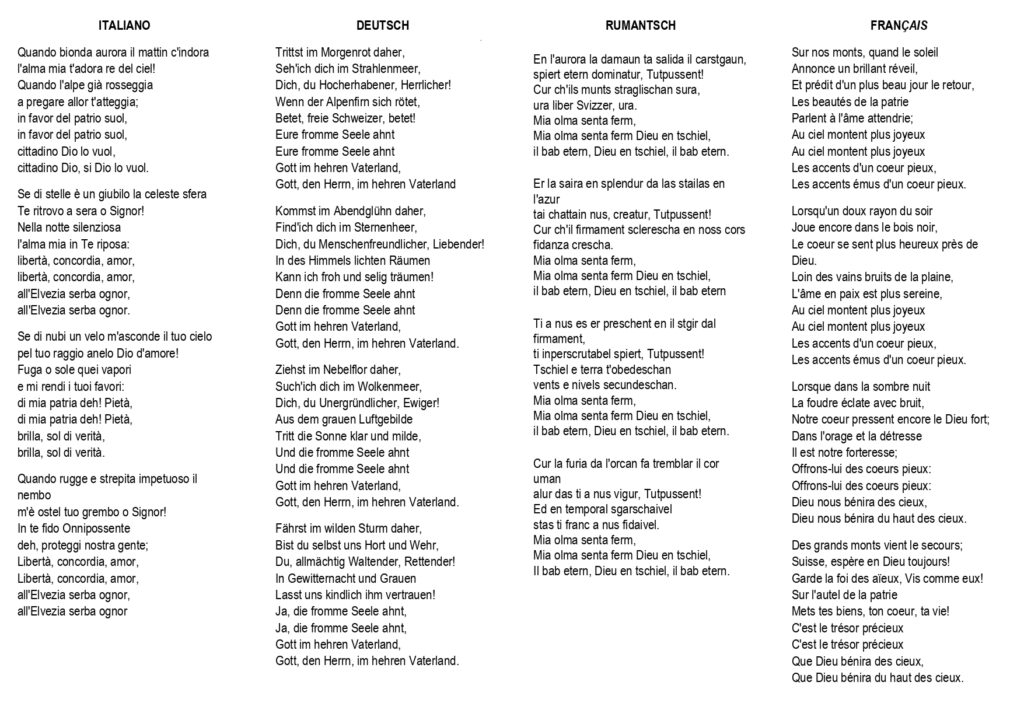Everybody ready to celebrate the Swiss national holiday
The Swiss national holiday is celebrated each August 1 and commemorates the birth of the Confederation in 1291.

A bit of history
On Aug. 1, Switzerland commemorates the Federal Pact of 1291 in which the Cantons of Uri, Schwyz and Unterwalden solemnly promised each other mutual assistance in the event of an external threat. Legend has it that representatives of the three founding cantons known as “The Three Confederates” swore on the Rütli meadows above Lake Lucerne to free the country from the Habsburgs.
The Federal Pact is considered the oldest Swiss constitutional act.
Swiss history was strongly marked by the Protestant Reformation. Ulrich Zwingli led the Reformation in Zurich while John Calvin, who fled France for religious reasons, brought the Reformation to Geneva.
Today the Confederation has 26 cantons: the youngest is Canton Jura, which was born in 1979.
Celebrations
On this anniversary, the address to the whole nation by the president or chairwoman of the federal government is held, politicians from federal councilors to mayors give their speeches, bonfires are lit and fireworks are fired. In some places, children parade through the streets with lanterns decorated with the Swiss cross and their canton’s coat of arms, and processions are held with traditional costumes, yodeling choirs, alphorn players and flag-waving.
Many places also stage the mythical story of William Tell, the legendary hero of Swiss independence who is said to have stood up to a Habsburg imperial bailiff. The famous drama in which Tell has to hit an apple laid on his son’s head with an arrow from his crossbow is by German poet Friedrich von Schiller and dates from 1804.
At 8 p.m. also, all the bells in Switzerland ring festively.
With the 1993 referendum, August 1 officially became a vacation throughout the country.
National Anthem
Switzerland’s first national anthem was the song “Rufst du, mein Vaterland,” written in 1811 by Johann Rudolf Wyss and sung to the tune of the English royal anthem “God Save the Queen.”
The current national anthem is the “Swiss Psalm”: the text was written in 1841 by Zurich poet Leonhard Widmer, while the melody is by Alberich Zwyssig, a monk and composer. In 1961 the Federal Council provisionally declared the “Swiss Psalm” as the national anthem in military and diplomatic circles; in 1981 the Swiss Psalm officially became the new national anthem by decree of the Federal Council. The text exists in all four national languages.

Most striking and famous celebrations
The most heartfelt celebration is held on the Rütli meadow by Lake Lucerne in Canton Uri, where it all began.The event includes celebratory speeches and a diverse program that ends with the singing of the Swiss national anthem. Reservations are required to gain access.
At the Rhine Falls in the canton of Schaffhausen, the waterfalls are illuminated and a fireworks display attracts many spectators.
In Ascona, on Lake Maggiore, in the canton of Ticino, festivities begin on July 31 and last until August 1, concluding with a large fireworks display over the lake.
On the Säntis, on the border of the cantons of Appenzell Innerrhoden, Appenzell Ausserrhoden and St. Gallen, an 80×80-meter flag considered the largest Swiss flag in the world is hoisted to mark Switzerland’s National Day.
In Basel, celebrations are held on July 31, with an evening party and fireworks display at 11 p.m.
In Bern, the festivities begin on July 31: this year the city, also celebrates 175 years of the Federal Constitution signed in 1848 that elected Bern as the capital.






